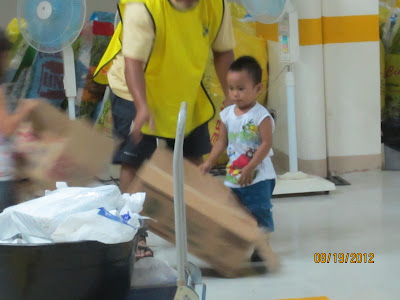Such efforts help the world to be a better place to live. One of the advantages of WHO is that they work with a common denominator in all countries, Disease. That is a reality that politics can't brush aside.
We had been invited to this regional meeting because we had been contributors in the past.
The meetings were held at the WHO Headquarters in Manila. This picture shows part of the campus of WHO and shows the building that contains the assembly hall.
The majority of the presentations and general discussions took place in this assembly hall.
We were also involved in a breakout meeting that had to do with funding and priority of projects.
In attendance at that regional meeting were representatives from Australia, Indonesia, Korea, Japan, Vietnam, Laos, Cambodia, India, and China. We also had representatives from UNICEF, UNESCO, and the United States Centers for Disease Control. Others in attendance were Global WHO members from Geneva, UNICEF from Brazil, and other leaders from Europe. These attendees were generally the leaders of National Institutes of Health from their respective countries. I am sure I have missed someone, but it was like seeing Rock Stars in the health care field worldwide.
Some of the objectives of the meeting involved vaccination manufacturing, cold chain distribution, vaccine affordability, volunteer and health care worker training and new vaccines.
During one of the breaks, I introduced myself to Dr. Shafiqul Hossain. He is a member of the WHO Western Pacific Region representing India. He gave a presentation of cold chain distribution and the problems he faced with distribution of vaccines in his area of the world. In our discussion, I mentioned options that might be viable from my past experience in US drug distribution. We exchanged personal information so that we could continue productive communication in the future. He and I were excited at the possibilities. This new avenue of approach could also give the church a more active role in the vaccine initiative.
Let's see what happens.



















































